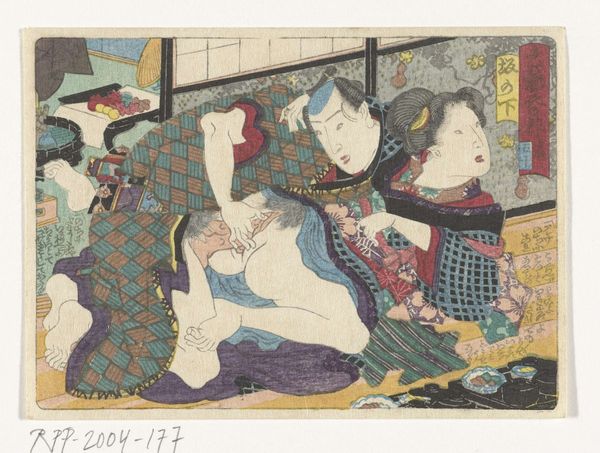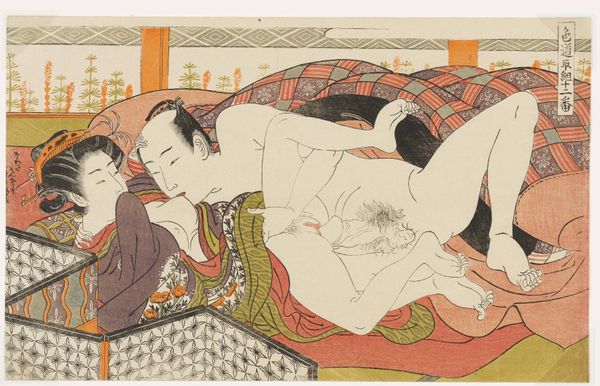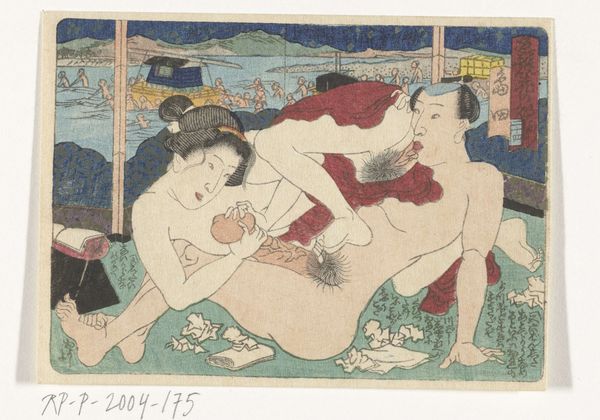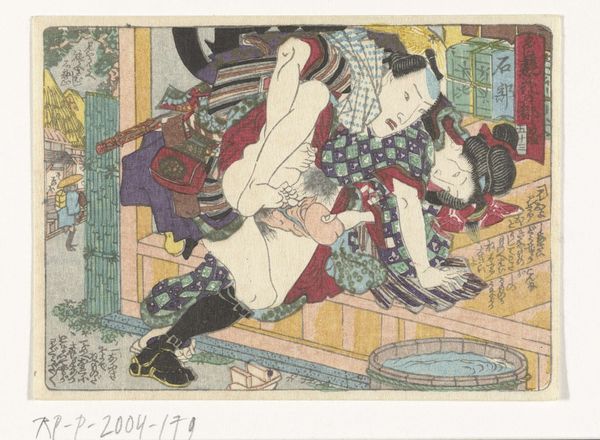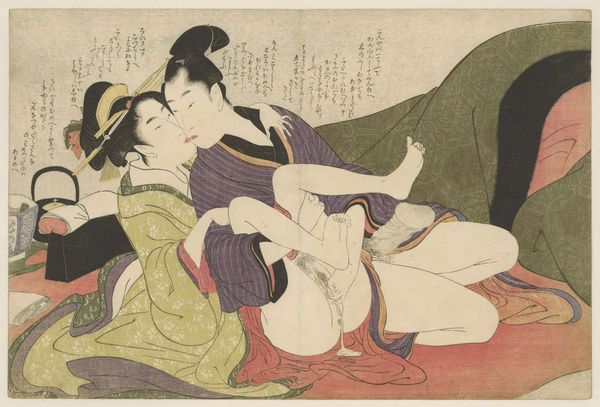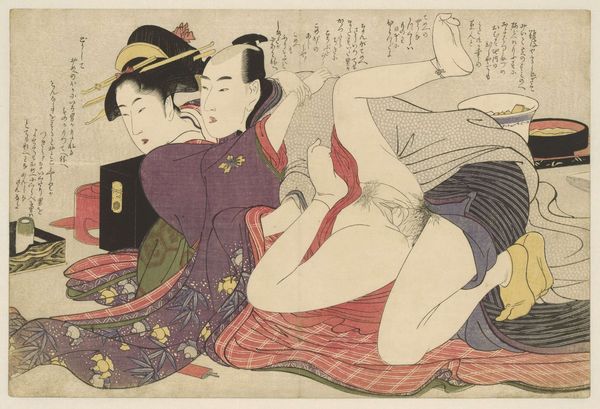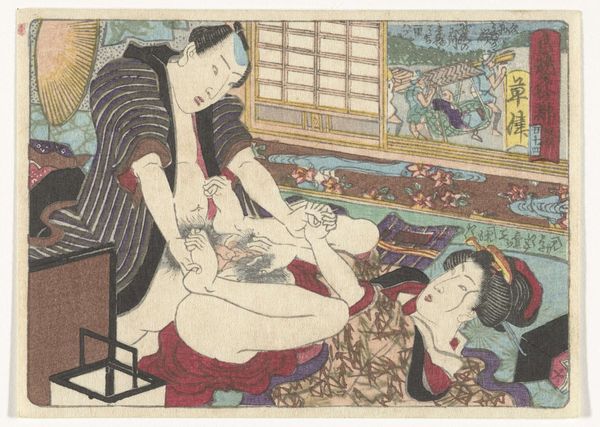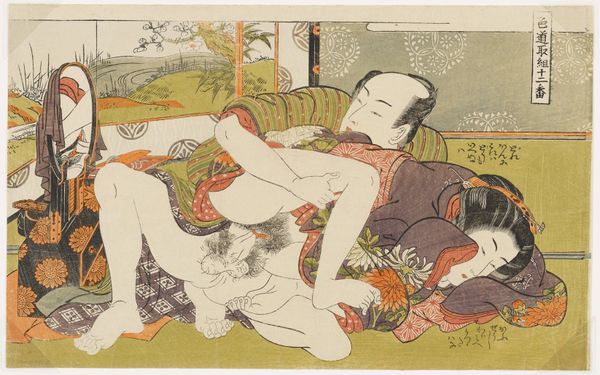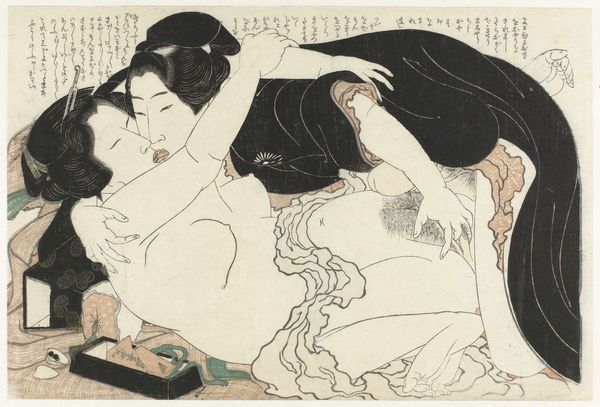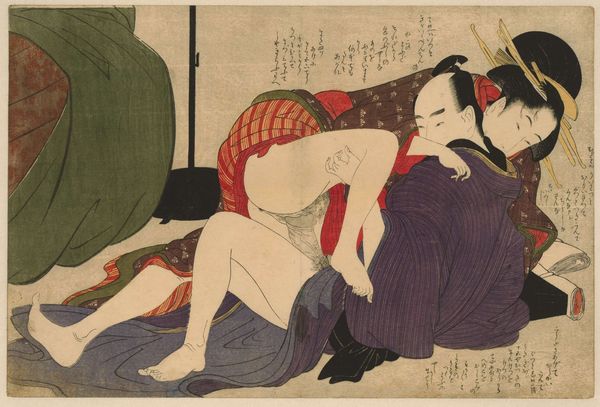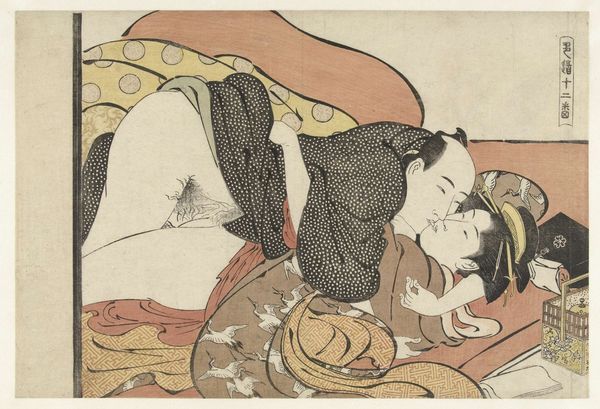
Pleisterplaats van de Tokaido 1835 - 1845
print, woodblock-print
# print
#
ukiyo-e
#
woodblock-print
#
watercolour illustration
#
genre-painting
#
nude
#
watercolor
#
erotic-art
Dimensions: height 89 mm, width 122 mm
Copyright: Rijks Museum: Open Domain
This is 'Pleisterplaats van de Tokaido', a woodblock print made by Utagawa Kunisada, a leading printmaker in 19th century Japan. Kunisada was a key figure in the Ukiyo-e movement, which flourished during the Edo period. Ukiyo-e, meaning "pictures of the floating world", often depicted scenes from everyday life, including landscapes, theatre, and erotica. These prints were not just art objects, but also a form of popular culture, reflecting and shaping the tastes of the urban middle class. Our image, with its explicit subject matter, would have circulated within a specific social context, likely among affluent urbanites with a taste for the risqué. What’s particularly interesting is how these images challenge our conventional notions of public and private art. While seemingly intimate, they were mass-produced and widely distributed, raising questions about the role of art in shaping societal attitudes towards sexuality and desire. Understanding these prints requires us to delve into the social, economic, and artistic networks of Edo-period Japan. Luckily, extensive collections of Ukiyo-e prints and related documents are held in institutions worldwide.
Comments
No comments
Be the first to comment and join the conversation on the ultimate creative platform.

